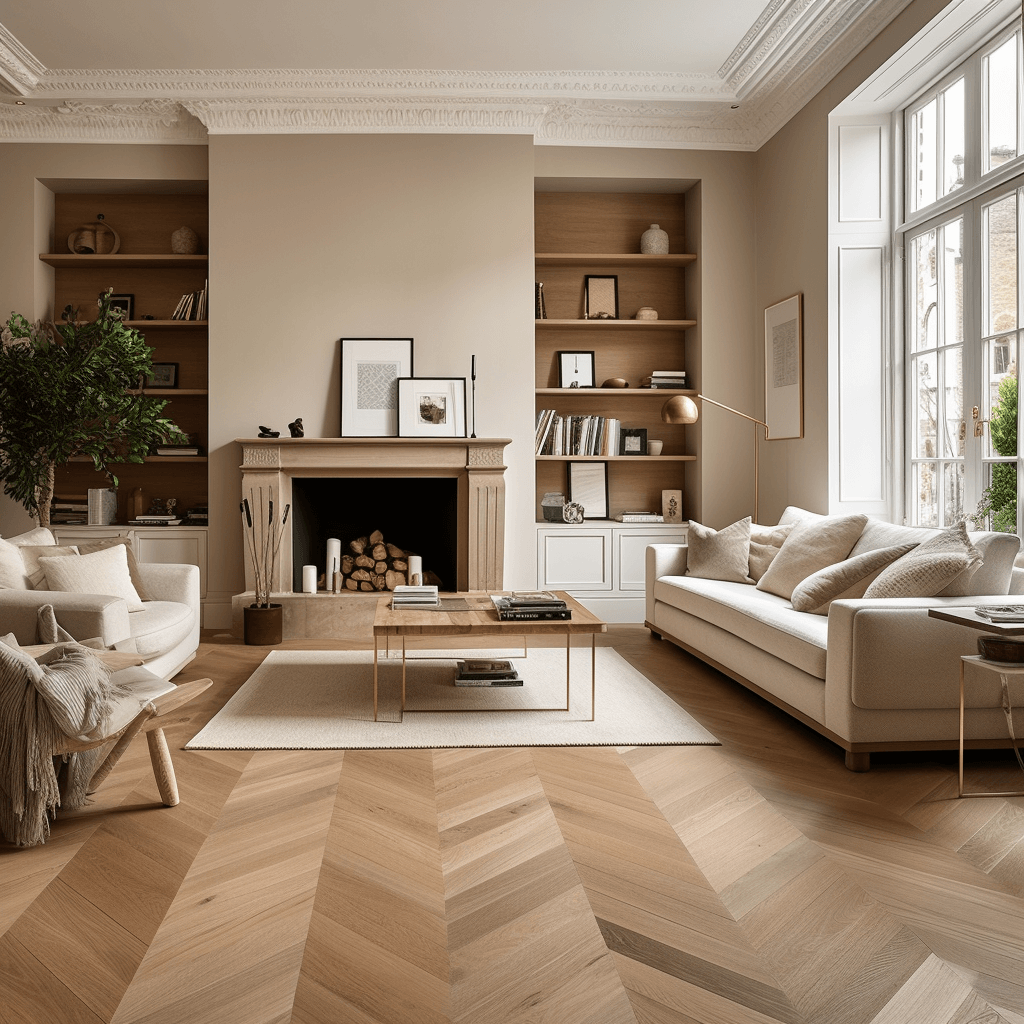The Importance of Flooring in Interior Design: Creating the Perfect Aesthetic
Introduction
When it comes to designing a captivating interior space, every element of the room plays a vital role in shaping its overall aesthetic. Flooring is an often underestimated aspect of interior design, having a great impact on the overall look and feel of a room, yet overlooked. In this article, we’ll look over the importance of flooring in interior design.
Setting the Foundation
Flooring serves as the very foundation of any interior design. Incorrectly chosen or mismatched flooring will stick out like a sore thumb amidst a carefully designed room. It sets the tone for the entire space, acting as a backdrop upon which all other elements are placed. In some cases, it can serve as a practical function. For example, herringbone flooring is known to work well in larger rooms, often creating the illusion of an even larger space due to the elegant, carefully crafted patterns.
Defining Style and Mood
The type of flooring you choose can significantly influence the style and mood of a room. For example, hardwood flooring creates a warmer, welcoming space, making it a popular choice for both traditional and modern interiors. Parquet flooring, whether herringbone, chevron, or many other patterned styles of flooring, give off a feeling of luxury and work great in high-end spaces and modern homes alike. On the other hand, sleek and polished tiles can create a contemporary and sophisticated atmosphere. Rustic, distressed engineered wood floors, such as our Old Town Distressed Range, evoke a cozy, vintage vibe with the unique, aged appearance of each individual board.
Harmonizing with Colour and Texture
Flooring is very much the thread that ties together the design elements within an interior space. It can complement the colour palette and textures of walls, furniture, and decor, creating a harmonious visual effect. The right flooring can enhance the richness of colours and highlight intricate textures in the room. A mismatched or clashing choice can disrupt the unity of the design and undermine the intended aesthetic.
Balancing Functionality and Design
While aesthetics are important, functionality should never be compromised. Different rooms have their own demands, and the flooring must cater to them if you want to avoid problems down the line. High-traffic areas like hallways and kitchens require durable materials that can withstand daily wear and tear. Most flooring options such as real woods, higher end laminates, and vinyl will cater to this as most of it is designed to be durable. But cheaper options, particularly laminates, will not last as long. Bathrooms, kitchens, and utility rooms need waterproof flooring options. LVT (or SPC) click floors accommodate for this, and even some laminates on the market today feature waterproof surfaces. Balancing practicality with design ensures that your space not only looks stunning but also stands the test of time.
Conclusion
Flooring is a design element as much as it is a functional utility. Its impact on the overall aesthetic, style, mood, and functionality is undeniable. Whether you're aiming for a classic, contemporary, or rustic look, the flooring you choose can make or break your interior design endeavour. By recognizing the importance of flooring as a foundational element, you're better equipped to create a visually captivating and harmonious space that leaves a lasting impression.


